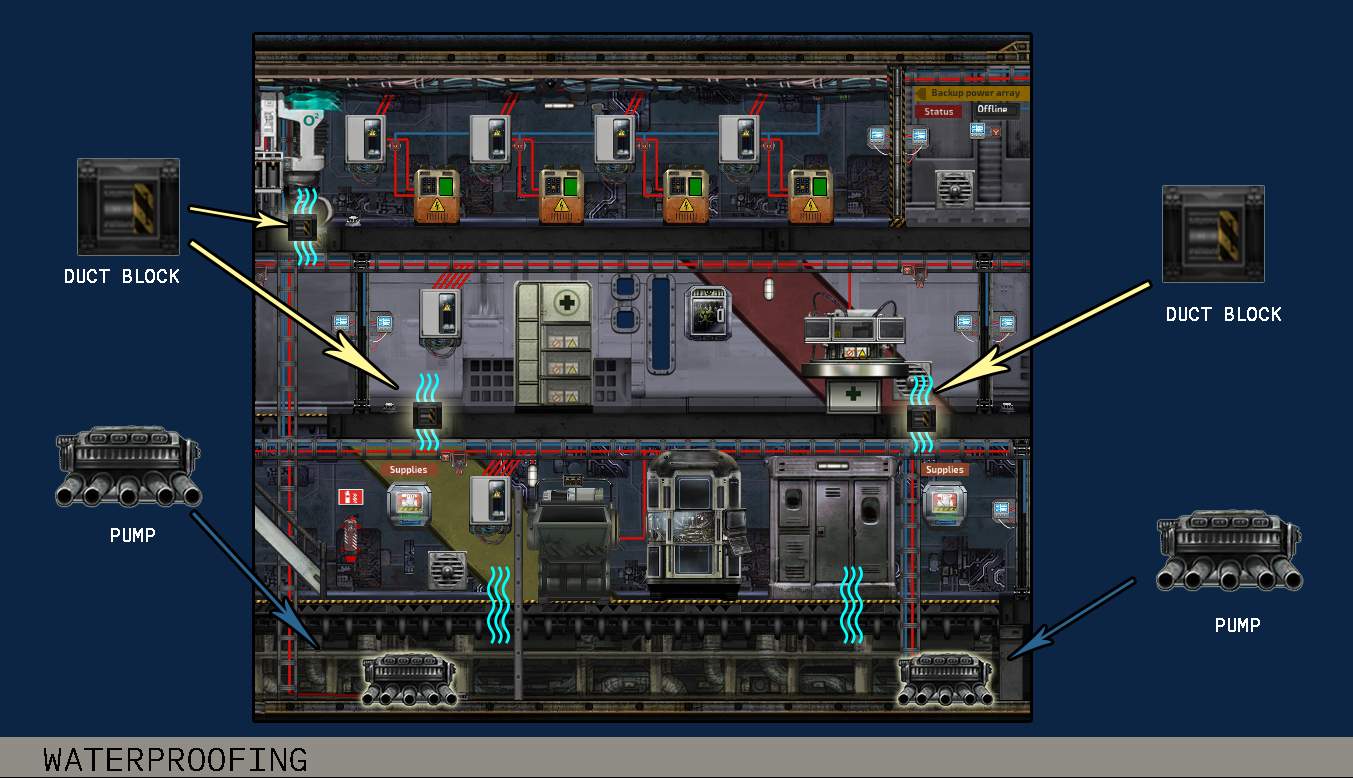

They have a tendency to overheat and eventually explode if not operated correctly, so place them a safe distance away from other vital devices. It is the engineers' responsibility to keep reactors running, so each reactor in the sub should be assigned an engineer. The nuclear reactor is the source of almost all the power on board the submarine. In the editor, red color means that a gap is currently closed, while blue means it is open (you may need to reopen the editor for the colors to update). For neighboring hulls with no walls, doors or hatches between them, a gap has to be placed manually. Gap objects are placed automatically between hulls when a door or hatch is placed. Where hulls separate spaces, gaps connect them, allowing water and oxygen to flow from hull to another. In some cases the AI also uses hull names to navigate, and, for example, bots prefer to use hulls with ‘airlock’ in their name when entering/exiting the submarine. The main purpose this serves is to provide an easy, customizable way to refer to different spaces. It also helps AI characters perceive linked hulls as a single room. This way linked hulls are displayed as a one, larger set. Link hulls together by selecting one hull, then holding space and clicking on another.


In non-rectangular rooms, it’s often necessary to use multiple hull objects to cover the whole area. You can change what information is shown and if any sensors are required by modifying the status monitor. Along with a room’s name, the monitor is capable of displaying the water level and quality of oxygen in a room. Hulls are displayed in the sub’s status monitor. Hulls also determine the overall size (= volume and mass) of the sub. If there are no hulls in the sub, there is nothing separating the sub from the water outside. Rooms inside subs in Barotrauma are defined by hull objects. Crew should probably not need to climb up 5 stories of ladders to get to a leak or a fire. TIP: Tall subs tend to be less usable than long subs, and can look a little weird and off balance when in play. TIP: If you’re feeling lost or need inspiration, open one of the ready-made submarines in the editor and take a look at how they’re built. Best results often come when experimenting with different options.Īfter a piece of a wall (or most things in the editor, really) is placed, it can be flipped by it’s x- or y-axis by selecting it and pressing ‘Mirror X’ and ‘Mirror Y’ -buttons or CTRL+N or CTRL+M. We suggest using the walls as labeled for a more balanced experience, but of course it’s not mandatory. Outside walls are sturdier than inside walls, shuttle wall pieces are somewhere in between. So starting with the outside hull is not necessarily the best course of action.
Barotrauma submarine editor tutorial generator#
It’s a lot easier to add room inside for that oxygen generator you forgot to include, at first, if you don’t have to move all those carefully placed shell pieces, fins and lights just to create a bit more space. When making a new submarine, it’s always a good idea to have a general idea of its shape and layout before building the outer hull. Different kinds of walls and platforms are used to keep oxygen inside and monsters outside, and to divide the interior space into smaller rooms and compartments.


 0 kommentar(er)
0 kommentar(er)
